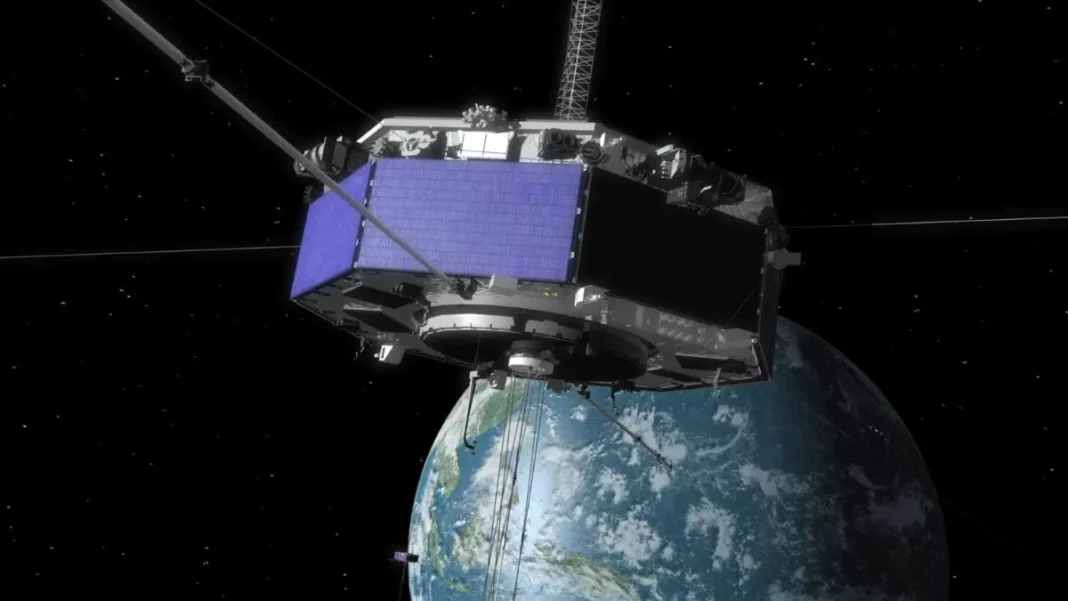NASA’s Magnetospheric Multiscale (MMS) mission has been at the forefront of space exploration for the past decade, making groundbreaking discoveries and advancing our understanding of magnetic reconnection. With its four-satellite fleet, the MMS mission has not only refined existing theories but has also uncovered unexpected reconnection locations, opening up new frontiers in space physics. As the mission celebrates its 10th anniversary, it continues to push boundaries and set records for GPS tracking at extreme altitudes.
Launched in March 2015, the MMS mission was designed to study the complex and dynamic magnetic environment surrounding Earth, known as the magnetosphere. This region is constantly bombarded by the solar wind, a stream of charged particles emanating from the Sun. As these particles interact with Earth’s magnetic field, they can cause a phenomenon known as magnetic reconnection.
Magnetic reconnection is a crucial process in space physics, where magnetic fields from different directions collide and realign, releasing huge amounts of energy. This process is responsible for phenomena such as the Northern and Southern Lights, and it also plays a significant role in solar flares and other space weather events. Understanding magnetic reconnection is key to predicting and preparing for these events, which can have a significant impact on our technology and infrastructure.
In the past ten years, the MMS mission has enabled over 1,500 research papers, making it one of the most prolific missions in NASA’s history. These papers have not only refined our understanding of magnetic reconnection but have also shed light on other processes in the magnetosphere, such as turbulence and plasma waves. This wealth of data has allowed scientists to test and refine their theories, leading to new insights and discoveries.
One of the most significant achievements of the MMS mission is its ability to capture high-resolution images of magnetic reconnection in action. The mission’s four identical satellites fly in a tight formation, allowing them to capture 3D images of the magnetosphere with unprecedented detail. These images have revealed unexpected reconnection locations, such as near the poles of the Earth, where the magnetic field is usually thought to be much weaker. This has challenged existing theories and opened up new avenues for research.
The MMS mission has also set records for GPS tracking at extreme altitudes. The satellites fly in an elliptical orbit, taking them as close as 6,900 miles to Earth’s surface and as far as 93,000 miles away. This extreme altitude range has allowed the mission to study the magnetosphere at different distances, providing a more comprehensive understanding of this complex region.
The data collected by the MMS mission has not only been invaluable to scientists but has also had practical applications. For example, the mission’s high-resolution images of magnetic reconnection have inspired new designs for spacecraft propulsion systems that rely on reconnection to generate thrust. This could lead to more efficient and faster space travel in the future.
As we celebrate the 10th anniversary of the MMS mission, we can look back on a decade of incredible discoveries and advancements in the study of magnetic reconnection. But the mission is far from over. The MMS satellites are still going strong, and with each passing year, they continue to collect valuable data, pushing the boundaries of our knowledge about the magnetosphere.
In the coming years, the MMS mission will continue to refine our understanding of magnetic reconnection and its role in space physics. It will also play a crucial role in preparing for future space exploration, providing valuable data for mission planners and engineers. With each new discovery, the MMS mission brings us closer to unlocking the mysteries of our universe and expanding our horizons.
In conclusion, the NASA MMS mission has completed a decade of incredible achievements, surpassing all expectations and revolutionizing our understanding of magnetic reconnection. With its four-satellite fleet, the mission has enabled groundbreaking research, challenging existing theories, and revealing unexpected reconnection locations. As we look towards the future, the MMS mission will continue to push boundaries and inspire new discoveries, paving the way for a better understanding of our universe.



